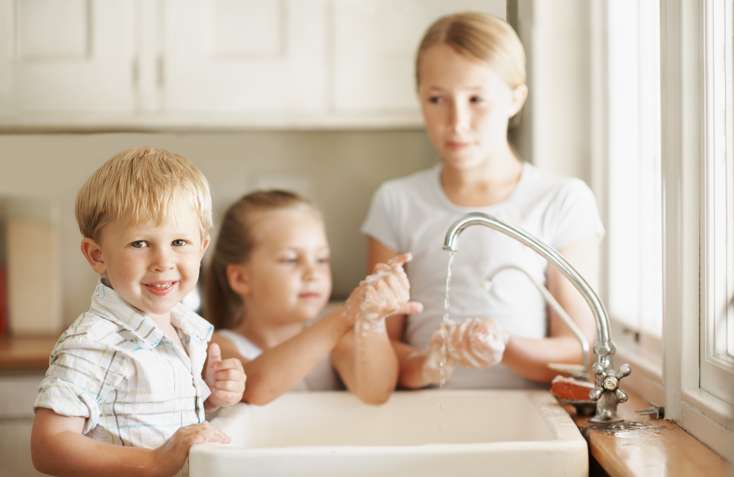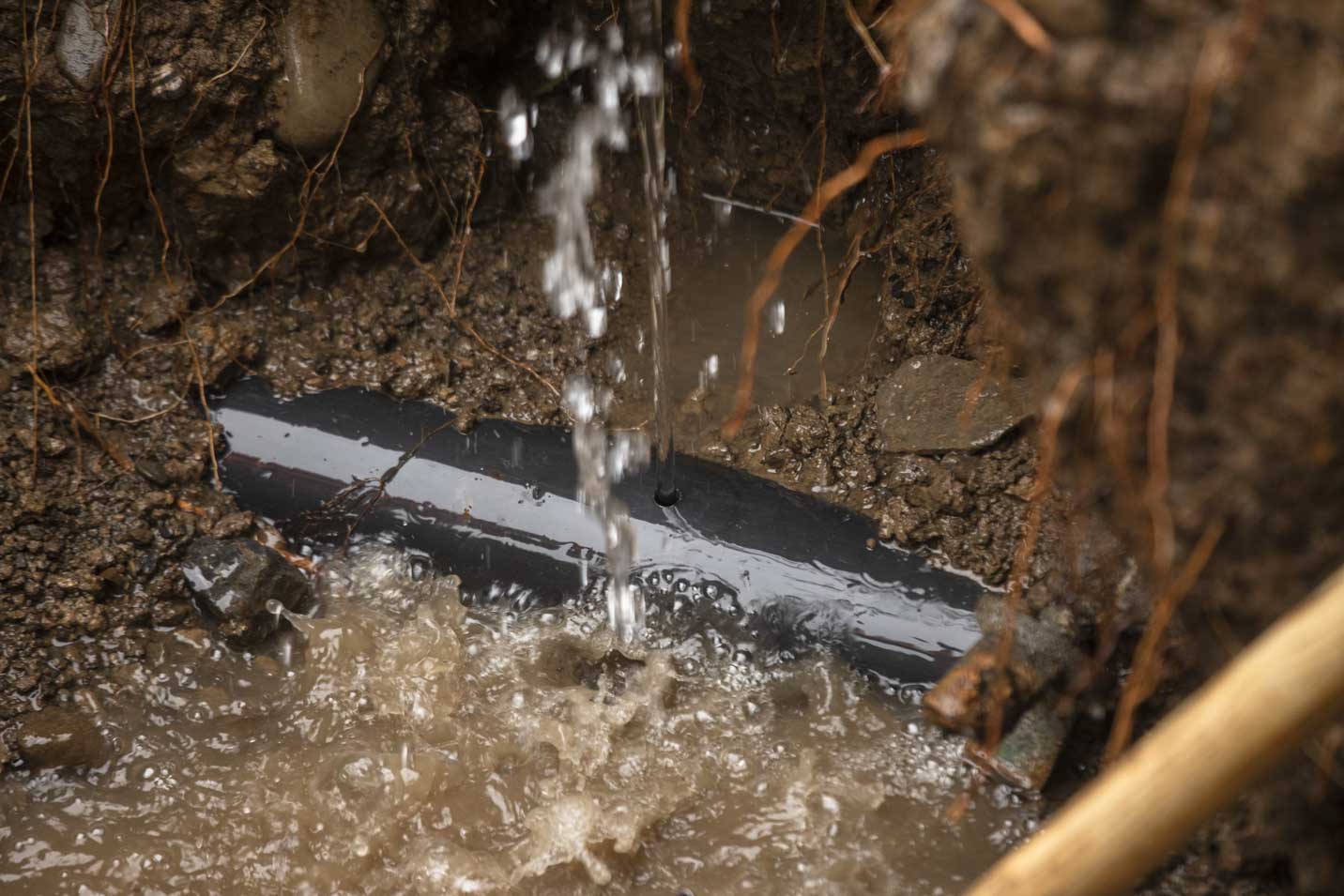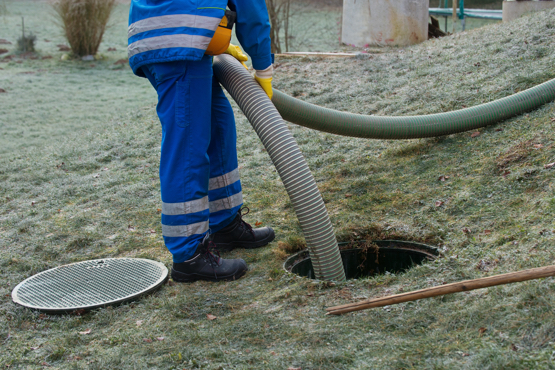Flooding
Flooding can be a very stressful and upsetting experience. At Uisce Éireann, we work very hard to prevent flooding. However, there are many reasons why flooding can occur that are beyond our control.
How we respond to a flooding report
Once the Uisce Éireann Customer Care Team is notified of a customer flooding incident, we will seek to:

1. Visit your property
Uisce Éireann will visit your home as soon as possible, usually within 4 hours of the flood being reported. Please be aware that it can sometimes take longer, e.g., if we are prevented from reaching you by exceptional circumstances such as severe weather or a large number of reported flooding incidents.

2. Determine the cause
If possible, we'll identify the cause or causes of the flooding. Please be aware that Uisce Éireann is not responsible for your internal plumbing or any flooding that relates to or originates from pipework that is not the responsibility of Uisce Éireann. Surface water and storm water floods should be reported to your Local Authority.

3. Work to fix it
If we think the flooding is due to an issue with pipework that is Uisce Éireann's responsibility, we will, if possible, work to resolve the flooding. This may involve carrying out on-site investigations in respect of the flooding. The Uisce Éireann Customer Care Team will keep you updated during these on-site investigations.
When Uisce Éireann visits your home to inspect the cause of the flood or if we carry out works there it is not an admittance of any liability on our part. We will need to investigate the incident and the ultimate responsibility and liability will need to be determined. We will keep in touch with you throughout this process.
Dealing with a flood
It is very important that you contact your insurance company regardless of the cause of the flooding, as your insurer is best placed to help you.
Minimise damage
Flooding incidents can be classed as internal or external. Internal flooding is where water has entered the building on your property and external flooding is where water has flooded the curtilage of your premises but has not entered the building. Here are some steps which you can take to minimise the damage caused by internal flooding.
- Move valuable items and important documents to a safe, higher place
- Switch off gas and electricity supplies if water levels are rising but only if safe to do so
- Place wet towels against the bottom of doors
- Plug sinks, shower trays etc. and, where possible, weigh down the plugs to prevent water flowing back up the drains
- Move furniture upstairs but only if safe to do so
Health precautions
As flood water may include sewage, there are some basic hygiene precautions which should be taken when coming into contact with flood water. You should contact your GP immediately if someone becomes ill e.g. experiences vomiting or diarrhoea.
- Wear protective clothing such as rubber gloves and wellingtons
- Wash your hands well after any contact with floodwater
- Protect any cuts and grazes
- Disinfect footwear and clothing
- Keep children, the elderly, pets or anyone with a health condition out of the affected area
- Dispose of contaminated food
- Do not eat contaminated crops from your garden or allotment
- Do not turn your heating up to dry the property and its contents- higher room temperatures may prolong the life of any bacteria deposited by the flood
- Ensure the property is well ventilated by leaving windows and doors open as much as possible
- Unblock any vents to ensure a free flow of air
Safety tips
- Flooding can damage electrical or gas appliances and can also make your home vulnerable afterwards
- Avoid using affected gas and electrical appliances until a qualified gas fitter or electrician has checked they're safe
- With internal flooding, ensure the property is well ventilated by leaving windows and doors open as much as possible and by unblocking any vents to ensure a free flow of air - but still remember your home needs to be secure
Avoid future flooding
There are a number of items which should never be flushed. The items listed below may look like they disappear when they are flushed, but once they pass the U-bend, they don't break down like toilet paper. They should be disposed of in a bin and not the toilet.
- All wipes even if the pack says 'flushable', including baby, personal cleansing, toilet and household cleaning wipes
- Sanitary items including sanitary towels, tampons, liners, applicators and backing strips
- Cotton wool & cotton buds
- Disposable nappies & nappy liners
- Condoms
- Incontinence pads
- Bandages & plasters
- Contact lenses
- Unwanted medicines
Fats, oils and greases should never be poured down the sink. Once the temperature cools, they harden in the pipes and cause blockages. Follow these tips to avoid blocking your pipes.
- Allow kitchen grease to cool down, then scrape it into a bin
- If cooking oil remains in liquid form once cool, pour it into an empty container and place in a bin
- Stocks, sauces and milk products all contain fat, which can affect your drains - leave the residues from any of these products to cool and harden, then put them in a bin
- Know the approximate location of your service connection(s). This can help you identify any possible flooding problems at an early stage and will also help you to make informed decisions when it comes to landscaping.
- As tree roots can quickly grow into pipes and restrict the flow of water causing blockages and flooding, it is important to limit the plants which are placed close to drains and service connection(s). Larger plants and trees should be planted far away, so their roots cannot impinge on the drains and service connection(s).
- When landscaping your garden, you must not build over pipes on your property and to do so is prohibited by law. You should also not tarmac over manholes. In the event of a flooding incident, these manholes will provide vital access to the pipes and service connection(s) allowing the flood to be managed.